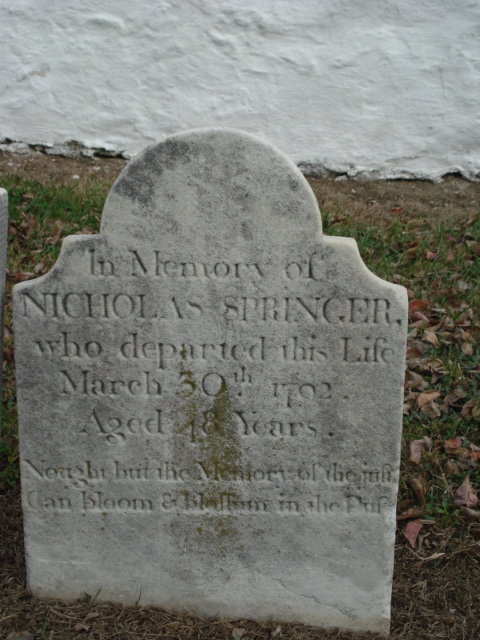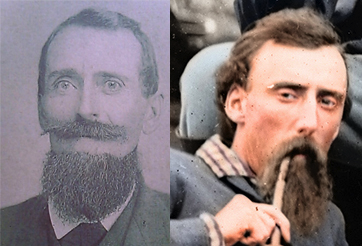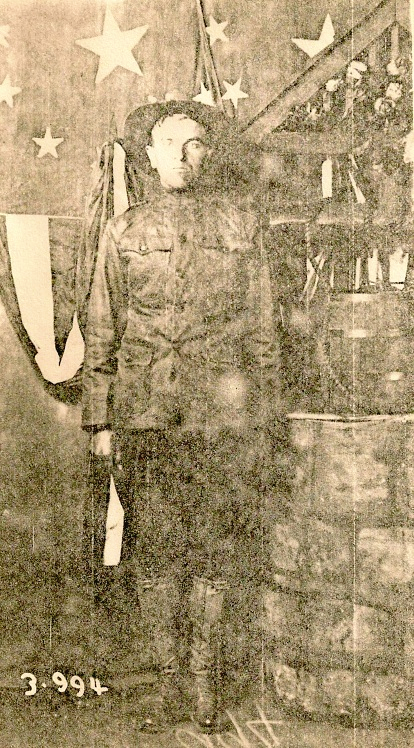Often, I have to remind myself to broaden my scope when I research my ancestors. I think this is the first time I’ve had to consciously narrow my scope. Grandpa used to tell me about his grandfather, William Henry Wiseheart. Most often, the stories would be about the Civil War or chair-making. Whatever the story, he was always “William H.” Even now, when I talk about him with my dad or my uncle, I have to be sure to refer to him as William H., because that is the name everyone is familiar with.
As I began researching, I looked for all William Wisehearts in the area. After all, Wiseheart is a fairly uncommon name. I started in what I call a “gathering mode,” wherein I find documents and save them for future perusal. I had intended to write about William H. a few weeks ago, but another ancestor called to me and I ended up putting him off. However, while I was initially preparing to write about him, I realized that some of the documents I had saved were for a different William Wiseheart. He is probably still related, but not the one I’m working on at the moment.
How did I realize I had two different William Wisehearts? The Report of the Adjutant General of the State of Indiana. There are two William Wisehearts listed: William Wiseheart who mustered in on August 19, 1862 and William H. Wiseheart of Fredonia, Indiana who mustered in on August 18, 1862 and was promoted to Corporal.1
William H. was the one I wanted, so I looked at that entry some more. He enlisted in Company F, Indiana 71st Infantry Regiment. This helped me narrow down which military records I needed. After he was promoted, he transferred to Company F, Indiana 6th Cavalry Regiment.1,2 His pension card, which also lists his wife, shows both regiments.3 William H. mustered out on June 17, 1865 in Pulaski, Tennessee.1,2
I had heard from my grandpa that before William H. married my great great grandmother, he had married Sarah Myers. I wanted to know more about this, so I started collecting non-military resources to learn about his life.
William Henry Wiseheart was born on November 14, 1833, in Kentucky, to parents Harman and Jemima (Jacobs) Wiseheart.4,5,15 In 1860, he lived with L. Blankenbaker and family in Shelby County, Kentucky, where he worked as an apprentice plow stacker (this last word is difficult to read, but that’s what it looks like).6 He then enlisted in the army in 1862.1,2
William H. married Sarah Myers on March 10,1865. They had four children, that I know of.4
- Jacob H. (08 Feb 1866 – 08 Feb 1866)4
- Emma A. (14 Oct 1868 – 14 Oct 1868)4
- Catherine A. “Kitty” or “Katie” (29 Dec 1869 – 9 Jun 1915)4,7
- Infant son (26 Jun 1872 – 21 Aug 1872)4
Sarah died on August 1, 1872.4 Since her death was so close to the birth of her son, I’m thinking she probably died of complications from childbirth.
William H. married Frances Lydia Browning on May 10, 1876.4,11 They had twelve children, but I’ve only been able to account for nine.9
- Daniel Signal (14 Jan 1877 – 23 Nov 1956)4,8,9
- Mary Elizabeth (4 Feb 1878 – 15 Dec 1965)4,8
- Rosey H. (18 Apr 1879 – 15 Oct 1902)4,8
- Infant daughter (20 May 1880 – 20 May 1880)4
- Infant son (22 Mar 1881 – 25 Mar 1881)4
- Infant daughter (4 Mar 1882 – 14 Mar 1882)4,12
- Chace Dudley (27 Dec 1883 – 30 Dec 1883)4
- Joseph M. (4 Mar 1886 – 10 Mar 1959)4,9,10
- Sanford Wesley (30 Oct 1890 – 25 Mar 1966)4,9,10
I have heard that Sanford Wesley, my great grandfather, had a twin who was stillborn, but I have not yet found any evidence of it.
At various points in his life, William H. had been a wagon maker, chair maker, and general wood worker.7,8,9,10,15 He was also a member of the Sanderson Post No. 191, Grand Army of the Republic.13,14 I looked for him and found him in the member book in the archive where I work. He is on the same page as Francis Rakestraw, whose granddaughter later married William H.’s son, Sanford. That may be how they met.
William H. Wiseheart died on May 28, 1910 of cardiac asthma. He was buried in New Albany National Cemetery (or Soldiers National Cemetery) in New Albany, Indiana.4,14,15,16

Tombstone of Corporal William Henry Wiseheart, New Albany National Cemetery. Photograph taken by Melissa Wiseheart, 1 September 2014.
Sources
- Terrell, W.H.H. Report of the Adjutant General of the State of Indiana. Volume 6. Indianapolis: Samuel M Douglass, 1866. 148-149. Print.
- Historical Data Systems, comp.. U.S. Civil War Soldier Records and Profiles (database on-line). Provo, UT, USA: Ancestry.com Operations Inc., 2009. Accessed 30 Apr 2011.
- “United States General Index to Pension Files, 1861-1934,” database with images, FamilySearch (https://familysearch.org/ark:/61903/1:1:QJD5-ZD5S : accessed 27 April 2011), William H Wiseheart, 1910; citing Indiana, United States, NARA microfilm publication T288 (Washington, D.C.: National Archives and Records Administration, n.d.); FHL microfilm .
- Transcription of the William H. Wiseheart Family Bible.
- 1850 United States Federal Census. Ancestry.com, 2009. Web. 19 Mar. 2015. 1st District, Jefferson, Kentucky. p.? (smudged). Family #619, lines 22-28.
- 1860 United States Federal Census. Ancestry.com, 2009. Web. 4 Aug. 2015. 1st District, Shelby, Kentucky. p.161. Family #72, lines 14-25.
- 1870 United States Federal Census. Ancestry.com, 2009. Web. 9 Jun. 2015. Washington, Owen, Indiana. p.6. Family #54, lines 32-34.
- 1880 United States Federal Census. Ancestry.com, 2009. Web. 3 Jun. 2015. Boston Precinct, Jefferson, Kentucky. p.2B. Family #18, lines 45-50.
- 1900 United States Federal Census. Ancestry.com, 2009. Web. 7 Mar. 2011. New Albany, Floyd, Indiana. p.5B. Family #108, lines 70-74.
- 1910 United States Federal Census. Ancestry.com, 2009. Web. 7 Mar. 2011. New Albany, Floyd, Indiana. p.16B. Family #339, lines 85-88.
- “Kentucky Marriages, 1785-1979,” index, FamilySearch(https://familysearch.org/ark:/61903/1:1:F4QC-G98 : accessed 9 June 2015). Wm. H. and Fannie Browning, 10 May 1876; citing Long Run, Jefferson, Kentucky, reference Bk11, P257, L10; FHL microfilm 482,712.
- “Kentucky Deaths and Burials, 1843-1970,” database, FamilySearch (https://familysearch.org/ark:/61903/1:1:FWP2-7MS : accessed 5 August 2015:. W Wiseheart in entry for Wiseheart, 14 Mar 1882; citing reference bk 5 p 209 no 41; FHL microfilm 209,702.
- Roll of Members W. L. Sanderson. Post No. 191. G. A. R., box 1, Grand Army of the Republic Records, 1889-1931, IR MSS 160, New Albany-Floyd County Public Library, Stuart B. Wrege Indiana History Room.
- “Deaths (Obituaries)” New Albany Evening Tribune 30 May 1910, Monday ed.: 1. Print. column 7. Accessed 04 Feb. 2015, Stuart Barth Wrege Indiana History Room.
- Floyd County Health Department. Microfilm. Floyd County, Indiana Deaths (1901-1910): book CH-21, p.98. Retrieved 18 Feb 2015 from Stuart Barth Wrege Indiana History Room.
- National Cemetery Administration. U.S. Veterans Gravesites, ca. 1775-2006 (database on-line). Provo, UT, USA : Ancestry.com Operations Inc., 2006. Accessed 30 April 2011.














